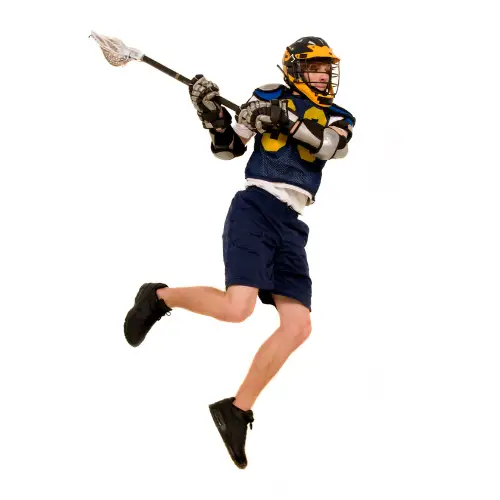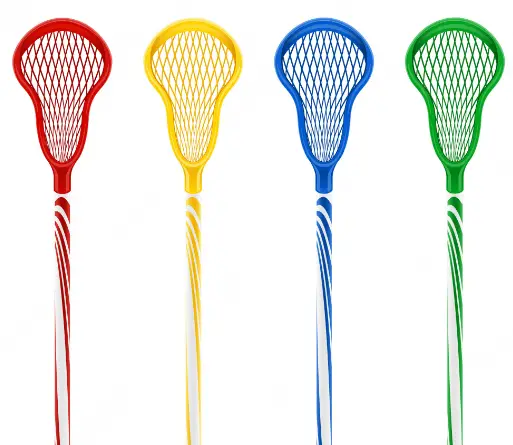If you’re an aspiring lacrosse player, then there’s no doubt that passing is a significant aspect of your game. Proper passing skills not only lead to a successful team effort but also add versatility to your game. If you’re struggling with making accurate passes, then don’t worry – it’s entirely okay. Improving your passing game is all about regular practice, techniques, and drills. In this article, we’ll discuss some tips and tricks to enhance your passing skills in lacrosse.
Understanding the Basic Lacrosse Pass Types
Overhand Pass: The overhand pass is the most common type of pass in lacrosse. It’s executed by holding the stick with both hands and throwing the ball overhand towards your intended target. This pass is usually used when you have a clear view of your teammate and there is no defensive pressure.
The key to a successful overhand pass is to make sure your wrists are loose and your fingers are spread out on the stick for a better grip. You should also step towards your target to generate more power and accuracy. Finally, it’s important to follow through with your arms after the release of the ball to maintain accuracy and power.
Sidearm Pass: The sidearm pass is a faster pass than the overhand pass and is useful when there is an obstacle between you and your intended target. To execute this pass, hold the stick with both hands and bring it to your side, then release the ball at a sidearm angle towards your target.
The key to a successful sidearm pass is to keep your elbow close to your body for better control. You should also use your top hand to guide the ball towards the target, and follow through with your arm to maintain accuracy and power.
Underhand Pass: The underhand pass is a useful pass when there is a defender in front of you or when you need to pass the ball quickly. To execute this pass, hold the stick with both hands and bring it behind your head, then release the ball at an underhand angle towards your target.
The key to a successful underhand pass is to use your bottom hand to control the release of the ball. You should also use your legs to generate power and accuracy, and follow through with your arm to maintain accuracy and power.
Behind-the-Back Pass: The behind-the-back pass is a flashy pass that is best used when there is no defensive pressure. To execute this pass, hold the stick with one hand and bring it behind your back, then release the ball towards your target.
The key to a successful behind-the-back pass is to practice it in isolation before using it in a game. You should also use your wrist and forearm to generate power and accuracy, and keep your eyes on your target throughout the pass.
Understanding the basic lacrosse pass types is important because it allows you to choose the right pass for the situation you’re in. With practice, you’ll be able to execute each type of pass effectively, and become a better passer overall.
Master Your Footwork
Mastering your footwork is a crucial aspect of improving your passing in lacrosse. Footwork plays a significant role in setting up your passes and allowing you to generate power and accuracy. Your footwork should focus on creating a strong base and maintaining balance while you pass. By planting your front foot and stepping into your passes with your back foot, you can generate power and improve accuracy. Additionally, mastering your footwork can help you maintain your positioning on the field, allowing you to quickly change directions and create space to make a pass. Consistent practice of footwork drills and techniques can help you develop muscle memory and improve your overall passing game in lacrosse.
Practice with a Wall
Practicing with a wall is an effective way to improve your passing skills in lacrosse. By using a wall as a training partner, you can work on your accuracy, consistency, and speed in a controlled environment. Starting with basic passes like the overhand and underhand passes, you can gradually increase the distance and angle of your throws to simulate different game situations. This helps to build your muscle memory and develop a feel for different types of passes. Practicing with your non-dominant hand is also essential to improve your overall passing ability. By incorporating fakes and dodges into your wall practice, you can prepare yourself for real-game situations and become a more effective player on the field. Overall, practicing with a wall is a great way to hone your passing skills and take your game to the next level.
Focus on Body Positioning
Body positioning plays a crucial role in delivering accurate passes. Before making any pass, make sure your body is facing the intended target. This positioning creates a straight line between you, your stick, and your teammate’s stick, resulting in a more direct and accurate pass.
Work with a Partner
It’s essential to familiarize yourself with your teammate’s playing style to make successful passes and work as a team. Working with a partner helps to recognize their movements, and you learn to anticipate their actions. The more you practice together, the better both of you will perform as a team.
Enhance your Vision
In lacrosse, most passes come from non-linear angles and tight spaces. Therefore, having excellent peripheral vision is crucial in successfully passing the ball to your teammates. It is vital to learn to keep your focus in front of you and anticipate your team’s movements. Try practicing visual drills and games to enhance your peripheral vision.
Conclusion
Practicing these methods regularly will help enhance your passing in lacrosse. Remember, it’s important to get the technique right, so keep practicing in front of a mirror or in slow motion and then start adding speed to your passes. Keep practicing, and you’ll notice a gradual improvement in your passing abilities.







